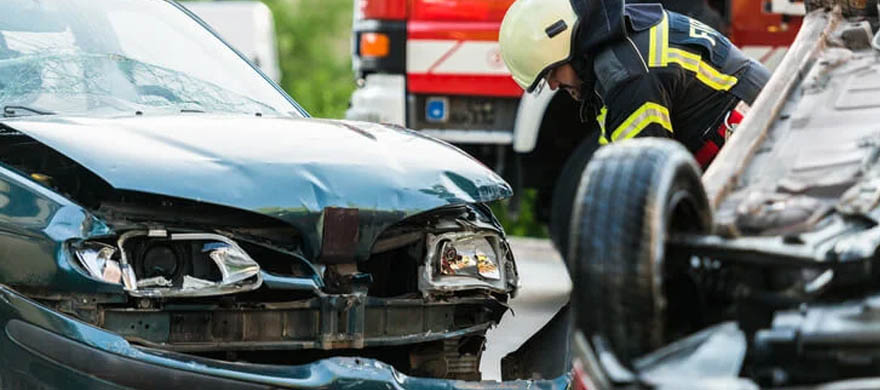
Owning a vehicle gives you more flexibility but making sure you have the proper auto insurance coverage can be confusing. Making sure that your vehicle, family, and assets are covered should be a key factor in the deciding on which policy and coverage works best for you.
Most people select the default coverage that may be more than they actually need or go for the least expensive option resulting in not enough coverage.
Discover auto insurance coverage terms to make sure you have enough coverage to protect your car, cover potential medical expenses, and limit your legal liability.
Bodily Injury Liability
Bodily Injury Liability coverage provides legal defense and asset protection if you are deemed responsible for another party’s bodily injury or death in an auto accident. Bodily Injury Liability coverage can protect your assets – including your home, savings and future wages – which could be in jeopardy.
You should select enough Bodily Injury Liability coverage to adequately protect your assets as you can be personally sued if your coverage is insufficient. Your coverage should take your total assets into consideration.
When selecting your coverage there are two limits, for example $100,000/$300,000. The first amount is the maximum coverage limit for any one person. The second amount is the total maximum coverage limit for one accident.
Property Damage Liability
Property Damage Liability coverage provides legal defense and asset protection if you are deemed responsible for another party’s property damage during an auto accident. Damage to someone else’s property can include a vehicle or building.
Each state has unique minimum requirements for Property Damage Liability insurance. You should buy enough Property Damage Liability coverage to adequately protect your assets. If you lease a car, your lease contract will typically require you to maintain minimum Property Damage Liability coverage of $50,000.
Collision
Collision coverage pays for the repair or replacement of your vehicle during an auto accident. If you are legally responsible for an accident, your auto insurance will not cover repairs to your vehicle unless you have Collision coverage.
You can choose the deductible, the amount you want to pay out of pocket before insurance pays your claim, for your policy. The higher the deductible the lower the monthly premium. If you choose a higher deductible, for example $500, I’d recommend that you maintain that amount in a savings account so that you have funds available in case you need it.
To keep your monthly premiums low, select a deductible for the highest amount you would feel comfortable paying out of pocket. People with older vehicles, which tend to have a lower value, may opt out of Collision coverage as the amount to repair the car surpasses the actual value.
Comprehensive
Comprehensive coverage pays for non-collision damages to your vehicle that don’t involve another car or truck. Non-collision damage can include a rock hitting your windshield, your vehicle being broken into or stolen, hail damage, a deer running into your car, fire, floods, vandalism, or a tree branch falling. Comprehensive coverage may allow you to collect up to the value of your car.
Most finance and lease companies require that you have this coverage as part of your agreement with them. Although there is no state mandate to have comprehensive coverage, if you finance or lease a vehicle there is typically a requirement to have Comprehensive coverage in your contract. If you’re still making payments on a vehicle, it can be a good idea to have comprehensive coverage.
Uninsured Motorist Coverage
Uninsured Motorist Coverage provides protection for you, your passengers, and your vehicle if you have an accident with a motorist who does not have insurance coverage or by hit-and-run motorists. Uninsured Motorist Coverage can pay for medical bills, loss of wages, and pain and suffering. Uninsured Motorist Coverage should be equal to your Bodily Injury Liability coverage, taking into consideration potential medical expenses and assets.
Uninsured Motorist Property Damage Coverage
Uninsured Motorist Property Damage coverage pays for damages to your vehicle or other personal property caused by an uninsured or hit-and-run motorists. Uninsured Motorist Property Damage should be equal to your Property Damage Liability coverage. Uninsured Motorist Property Damage is not available in all states so ask your insurance company if you need additional coverage.
Underinsured Motorist Coverage
Underinsured Motorist coverage can be useful if the insurance company for the person who caused the accident fails to pay for your medical or property damages due to a lack of appropriate coverage. If the damages to your vehicle will cost over $50,000 and the responsible party has a coverage maximum of $25,000 this insurance policy will cover the deficit.
A lawsuit for someone with inadequate auto insurance coverage can take a long time – leaving you potentially with no vehicle for a while. Underinsured Motorist coverage can be helpful during this time. Your insurance company may sue the responsible party to recoup their monetary loss.
Emergency Road Service
Emergency Road Service (ERS) coverage pays for towing your vehicle (typically up to 25 miles), changing a flat tire, and lockout service. It can add a nominal amount to your monthly premium but can provide immense value if you break down and need a tow or lock yourself out of your vehicle.
Rental Car Coverage
Unfortunately if you’re involved in an auto accident, coverage for a rental vehicle may not be included in your coverage. Rental Car Coverage provides you with a comparable rental vehicle while your car is being repaired.
If rental car coverage is not included, you will need to purchase additional coverage which will typically have a maximum coverage limit per accident.
